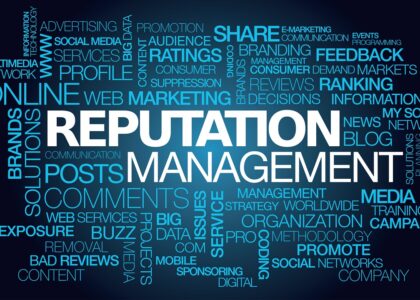What Is PR Crisis Management And Its Components?
PR crisis management is a strategic communication process that organizations implement to handle and mitigate the negative impact of unexpected events or crises that could harm their reputation. These crises can arise from various sources, such as product recalls, negative public perception, legal issues, social media backlash, or any situation that threatens the organization’s credibility and goodwill.
The goal of PR crisis management is not only to address the immediate issues but also to protect and enhance the organization’s reputation in the long term. It involves a well-thought-out plan that includes preventive measures, swift response strategies, and communication plans to navigate through challenging situations.
Key Components Of PR Crisis Management Include
-
Preventive Measures:
- Risk Assessment:
Identifying potential vulnerabilities both internally and externally to proactively address issues before they escalate.
- Crisis Communication Plan:
Developing a plan that outlines responsibilities, communication channels, and roles to ensure a coordinated response during an emergency.
- Media Training:
Providing training for key personnel to enhance their communication skills and ability to represent the organization effectively.
Swift Response:
- Assessing the Situation:
- Conducting a thorough examination to understand the nature and scope of the crisis.
- Activating the Crisis Team:
- Establishing a team of professionals from various departments to ensure a coordinated effort and prevent delays in decision-making.
- Communication Protocols:
- Communicating transparently and honestly through various channels such as press releases, social media, and direct contact to disseminate a consistent message.
Building a Competent PR Crisis Management Team
Spokespersons:
Individuals with a deep understanding of the organization’s values and exceptional communication skills.
Legal Experts:
Handling potential legal consequences arising from the crisis.
Media Relations Specialists:
Managing inquiries from the press and shaping public perception.
Customer Service Agents:
Serving as initial responders to manage problems and maintain goodwill with customers.
PR Experts:
Devising and Executing Effective Communication Strategies
- Laying the Groundwork:
PR crisis management begins well before a crisis unfolds. Proactive companies position themselves strategically, incorporating:
- Risk Assessment:
A comprehensive risk assessment identifies potential vulnerabilities internally and externally, allowing proactive issue resolution.
- Crisis Communication Plan:
Well-designed plans outline responsibilities, communication channels, and roles for a coordinated response. This includes crafting holding statements, designating spokespersons, and establishing clear communication lines.
- Media Training:
Investing in media training for key personnel offers advantages, enhancing spokesperson skills for interviews, tough questions, and aligning with company values.
The Critical Timeframe: Swift Response
In the rapid digital era, timing is critical, and a delayed response exacerbates a crisis. Immediate action in PR crisis management involves:
- Situation Assessment:
A prompt and thorough examination of the issue is crucial to understanding its nature and scope for future assessments.
- Crisis Team Activation:
Establishing a crisis management team swiftly ensures a coordinated effort and prevents decision-making delays.
- Communication Protocols:
Transparent and honest communication is pivotal. Utilizing press releases, social media, and direct channels disseminates a consistent message.
Constructing a Professional Crisis Management Team
The effectiveness of the lead team defines Professional Crisis Management. A well-rounded PR crisis management team typically includes:
- Spokespersons:
Individuals with a deep understanding of organizational values and exceptional communication skills.
- Legal Experts:
To handle potential legal consequences arising from the crisis.
- Media Relations Specialists:
Proficient in managing press inquiries and shaping public perception.
- Customer Service Agents:
Initial responders equipped to manage issues and maintain customer goodwill.
- PR Experts:
Competent professionals devising and executing effective communication strategies.
Assessment and Guidance:
Turning Challenges into Opportunities Post-containment, the focus shifts to assessment and learning, covering:
- Post-Crisis Assessment:
Identifying strengths and weaknesses in crisis response facilitates growth. Evaluating what worked well and areas for improvement prepares for future emergencies.
- Reputation Restoration:
Employing strategies like corporate responsibility initiatives aids in rebuilding stakeholder confidence.
- Crisis Action Plan Revision:
Updating the crisis communication plan based on learned lessons ensures better preparedness for future challenges.
Case Studies:
Lessons from Effective Crisis Management Analyzing real-world case studies offers valuable insights. From Tylenol’s response to product tampering to Johnson & Johnson’s transparent communication, lessons abound for those facing adversity.
A Continuous Journey
Recognizing that unforeseen PR catastrophes may arise, having a well-defined PR crisis management plan is crucial. Ongoing monitoring of online discussions related to the company and a strategy for potential PR issues are recommended. PR crisis management isn’t a one-time event but an embedded cultural practice. Companies embracing transparency, taking proactive measures, and viewing challenges as growth opportunities are better equipped to weather storms and emerge stronger. A proactive and adaptable approach to Professional Crisis Management becomes a pivotal component of 21st-century firm strategy given the dynamic nature of modern business and communication.
Source: https://freepsports247.com/2023/11/25/professional-crisis-management/









